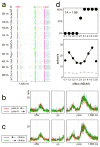Neurons in the orbitofrontal cortex encode economic value
- PMID: 16633341
- PMCID: PMC2630027
- DOI: 10.1038/nature04676
Neurons in the orbitofrontal cortex encode economic value
Abstract
Economic choice is the behaviour observed when individuals select one among many available options. There is no intrinsically 'correct' answer: economic choice depends on subjective preferences. This behaviour is traditionally the object of economic analysis and is also of primary interest in psychology. However, the underlying mental processes and neuronal mechanisms are not well understood. Theories of human and animal choice have a cornerstone in the concept of 'value'. Consider, for example, a monkey offered one raisin versus one piece of apple: behavioural evidence suggests that the animal chooses by assigning values to the two options. But where and how values are represented in the brain is unclear. Here we show that, during economic choice, neurons in the orbitofrontal cortex (OFC) encode the value of offered and chosen goods. Notably, OFC neurons encode value independently of visuospatial factors and motor responses. If a monkey chooses between A and B, neurons in the OFC encode the value of the two goods independently of whether A is presented on the right and B on the left, or vice versa. This trait distinguishes the OFC from other brain areas in which value modulates activity related to sensory or motor processes. Our results have broad implications for possible psychological models, suggesting that economic choice is essentially choice between goods rather than choice between actions. In this framework, neurons in the OFC seem to be a good candidate network for value assignment underlying economic choice.
Figures




References
-
- Samuelson PA. Foundations of economic analysis. Harvard University Press; Cambridge, MA: 1947.
-
- Kahneman D, Tversky A, editors. Choices, values and frames. Russell Sage Foundation - Cambridge University Press, Cambridge, UK; New York, NY: 2000.
-
- Kagel JH, Battalio RC, Green L. Economic choice theory: an experimental analysis of animal behavior. Cambridge University Press; Cambridge, UK; New York, NY: 1995.
-
- Padoa-Schioppa C, Jandolo L, Visalberghi E. Multi-stage mental process for economic choice in capuchins. Cognition. 2006;99:B1–B13. - PubMed
-
- Ongur D, Price JL. The organization of networks within the orbital and medial prefrontal cortex of rats, monkeys and humans. Cereb Cortex. 2000;10:206–19. - PubMed
Publication types
MeSH terms
Grants and funding
LinkOut - more resources
Full Text Sources
Other Literature Sources

